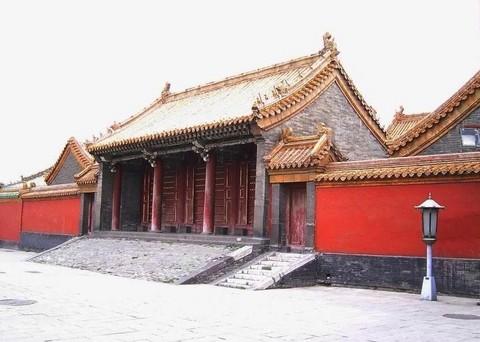
Shenyang the Palace Museum is that nguktrum Kazakhstan of initiator in Qing Dynasty is red and the emperor Taiji builds the palace used, established in 1625, its floor space was 67,000 square meters, there are more than 500 more than 100 seats buildings in all. Located in covering an area of more than 60,000 square meters Shenyang the Palace Museum of the centre of the ancient city of Shenyang, the building is intact in the palace, it is one of the remaining two major palaces of buildings of China.
Its scale is much smaller than that of Beijing s Imperial Palace that cover an area of 720,000 square meters, but, it has one s own special in architecture, it is the most important visit in Shenyang that is clicked now.
Clear before entering the GATT, its imperial palace is set up in Shenyang, after moving the capital to Beijing, this imperial palace is called palace of city established as a second capital besides the capital , stay palace . Called it Shenyang the Palace Museum later. It imperial palace of will it be the early years Qing Dynasty, Qing Dynasty the intersection of emperor and the intersection of grandfather and the intersection of nguktrum and the intersection of Kazakhstan and red and the intersection of father and the intersection of emperor and palace of Taiji of Shuizhi of Shuizhi.
Gold God s will ( 1625) in ten years after Shenyang the Palace Museum was established in ,Last 11 year, to clear high the intersection of Germany and the first year of an era ( 1636) Basically build up. There are more than 90 all buildings, more than 300, cover an area of more than 60,000 square meters, it is the extant palace building of most intact ancient emperor second only to Beijing the Palace Museum of China.
It inherits China s ancient architecture tradition in art of the building, melts Chinese, bes full, covers with art of all nationalities in an organic whole, there is very high historical value.
It regards high policy hall as the centre, the palace is a central axis that would rather get from the large clear door clearly, divide the Palace Museum into three No. in east, middle, the west. Middle Road is a subject of the Palace Museum, high policy hall (emperor s audience hall) It is a core of the subject, it is an emperor Taiji that deals with the places of the affairs of state, mix with the flying dragon pavilion, circle in the air in room, China, Japan floor in phoenix s pavilion, teacher s kind room, association.
Would rather there are phoenix s floors, clear palaces behind, there are emperors the thing that concubines got into bed and occupied mix the palace, and keep fit and hall, lying between the happiness palace, offering the allusion quatation pavilion, guiding all hall, protecting the palace very much,etc.
. East Road building regard large policy hall as centre, complement with left and right the intersection of wing and pavilions, the Eight Banners pavilions Wang. This, enter the GATT Qing Dynasty, the intersection of the Eight Banners and organic symbol, early the intersection of the Eight Banners and military system in only historical historic site under the intersection of palace and building.
The large policy hall is used for holding the grand ceremony, such as issuing the imperial edict, announce the army goes on an expedition, meet offices and men and return in triumph in the place to ascend the throne etc. with the emperor. Ten king pavilions are the place where left and right wing king and the Eight Banners minister handle affairs.
The monarch and his subjects of this kind shut the phenomenon that the administration handles affairs and moves in the palace, it is rare in history.
